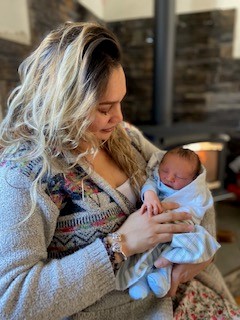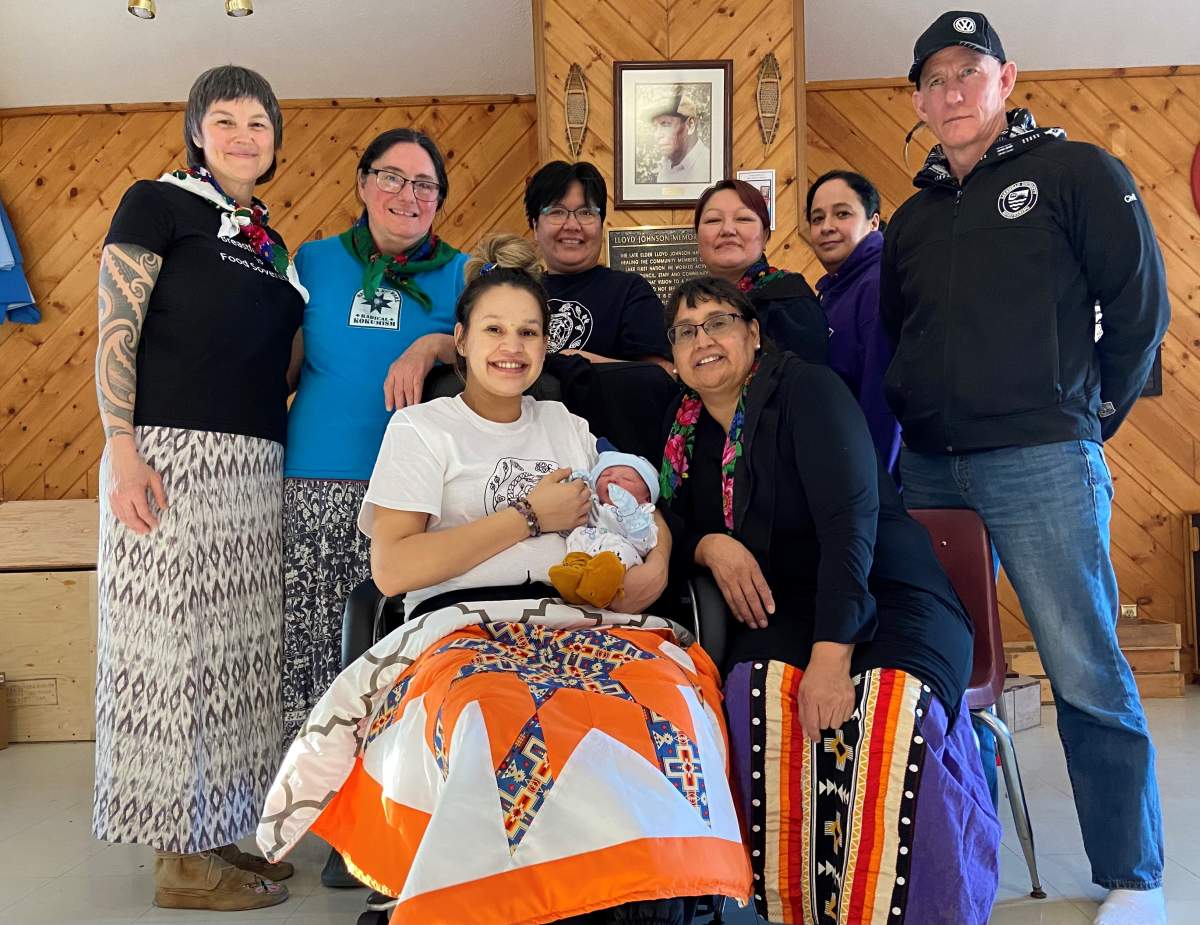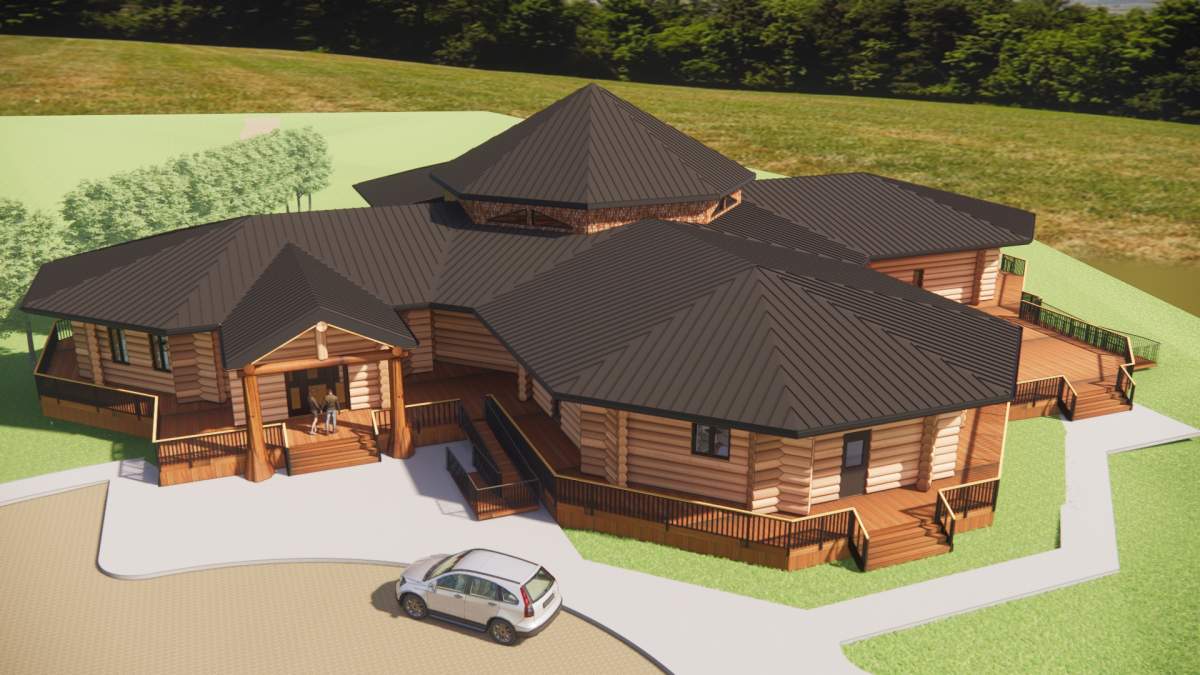A fire was lit in the healing lodge in Sturgeon Lake First Nation, Sask., while Ashley Rabbitskin prepared to welcome her baby boy into the world. A smudging ceremony purified the space and her family, along with a team of midwives, helped guide her through her labour using traditional medicines.

As the baby began to crown, both the midwives and Ashley’s family began singing, celebrating his arrival into the world.
Ashley’s son, Kaleo, was born on Feb. 22, 2022, marking the first traditional birth in the community in over 50 years.
“It was done naturally and it was not rushed, it was done peacefully in such a loving manner,” said Ashley’s mother, Norma Rabbitskin, who is also a senior health nurse manager at Sturgeon Lake Health Centre.
“When he was placed on in Ashley’s chest, it was really powerful because it was seeing the connection,” she told Global News. “It was full circle to witness; I myself was born in my home community, so to see that it was very special to me.”

In 2015, the Truth and Reconciliation Commission of Canada issued 94 calls to action, urging the federal government to acknowledge and uphold the health-care rights of Indigenous Peoples. Specifically, Call to Action 22 asked Canada to recognize the value of Indigenous healing practices.
Ashley’s childbirth became an important step in making this a reality, as the community is in the process of building a birthing centre. Rabbitskin said the hope is to restore the tradition of community-based childbirth, something Indigenous people have been deprived of for decades.
Indigenous people and birth evacuations
In remote Indigenous communities across Canada, many healthy, low-risk pregnant women are forced to give birth hundreds of kilometres away from their families, culture and language. This is because many remote communities do not have access to birthing facilities or health-care professionals.
The practice, which is also known as “birth evacuation,” was put in place by the federal government decades ago, with the intention of reducing infant mortality rates, according to a 2021 study published in Women and Birth.
However, it often comes with great personal and emotional costs. With more rural hospitals closing combined with the ongoing physician shortage in Canada, many Indigenous women are having to travel farther distances to access care during their pregnancy.
“Pregnancy and birth are vulnerable times in most people’s lives. And when you have that experience, compounded with anti-Indigenous racism in health care, it’s a lot,” said Diane Simon, a Mi’kmaw midwife working with the Association of Ontario Midwives.
“Our health-care system has been eroded to this way where we don’t even question having to drive an hour or two to get to the hospital, which is very common,” she said, adding many more have to travel even farther.
Simon stressed the importance of Indigenous women giving birth in their community for emotional, cultural and spiritual support.

“I think that Indigenous midwives working in Indigenous communities can really help turn the tide with some of what’s happening in the health-care system,” she said.
In Canada, Indigenous women who live on rural and remote reserves are evacuated out of their communities late in their pregnancy to receive maternity care in urban centres, according to Karen Lawford, associate professor in the midwifery of education program in the department of obstetrics and gynecology at McMaster University in Hamilton.

Get weekly health news
A 2021 CMAJ study found that in rural areas, 23 per cent of Indigenous mothers travelled 200 kilometres or more to give birth, whereas two per cent of non-Indigenous mothers in rural areas travelled the same distance for birth.
“No one likes to travel for birth,” Lawford said. “Everyone I’ve met has always wanted to stay at home or in their community to have labour and birthing services.”
This is especially true because of the growing evidence of systemic racism many Indigenous people face in Canada’s health-care system.
For example, in September 2020, Joyce Echaquan, an Atikamekw woman and mother of seven children, filmed herself at the hospital in Joliette, Que., as female staff were heard insulting and mocking her shortly before she died.
The discrimination against Indigenous patients is the reason Ashley chose to have her baby close to come.
“It was important for Ashley to deliver in the community because she saw firsthand how our women were being treated in the hospitals because she worked as a birth support worker at the hospital and in Saskatoon,” Rabbitskin said. “And she saw how they’re mistreated. There’s a lot of racial discrimination.”
'Cruel, costly and unnecessary'
Alisha Julien Reid, a Mi’kmaw midwife and co-chair of the National Council of Indigenous Midwives (NCIM), called the practice of birth evacuations “cruel, costly and unnecessary.”
“NCIM has been very open with strongly condemning the routine and blanket evacuation of pregnant people. And we’ve been demanding the return of birthing services to all Indigenous communities,” she said.
When a woman travels out of her community to give birth, many end up staying in transitional housing shelters or motels, which may leave vulnerable people at additional risk, she warned.
A 2021 study published in the Health and Human Rights Journal, said when Indigenous women are routinely evacuated from rural or isolated communities to urban centres, it separates them from their support networks and places them in unfamiliar environments.
“Being alone and unsupported creates unnecessary stress and can create negative health consequences for both the woman and baby, such as anxiety, preterm birth and low or high birth weights,” the authors stated.

Another 2021 study published in The Journals of the Australian College of Midwives found that evacuation of women can also add strain on the family.
“With limited support, families struggle with childcare challenges, financial burdens and the emotional and physical health consequences of children separated from their mothers,” the researchers stated. “These accumulated stressors can in turn compromise parent-child bonding, and lead to family tensions and breakups.”
The isolation many mothers face when giving birth away from home became strikingly evident during the COVID-19 pandemic, Simon said, as many people were forced to deliver babies without a support network.
“I think the rest of the country, like non-Indigenous people, had a very small glimpse of how (isolation) like that feels,” Simon said.
“During COVID, people weren’t allowed to enter and have support people and there was big outrage about it. For First Nations, for so long, that’s been the reality.”
The importance in Indigenous midwives
One way to help bring back traditional birth practices is by using the expertise of midwives, which is nothing new for Indigenous communities, Lawford explained.
Indigenous midwives were historically not only seen as healers but also passed down oral traditions and teachings. Lawford said many used a holistic approach to care, encompassing not only the physical aspects of childbirth but also the emotional, cultural and spiritual well-being of the expectant mother.
“It has only been in the last hundred years that this practice has been taken away from communities,” a 2018 report from NCIM said. “This occurred for a number of reasons, including colonization and changes in the health-care system in Canada.”
Currently, in Canada, very few First Nations communities have access to midwives and most women must birth their babies away from their communities, Lawford said.
Although small in number, there as Indigenous midwifery programs scattered throughout Canada. One of the oldest programs is the Inuit midwifery service in Puvirnituq, a northern community in Nunavik, which has been running since 1986. In the 1990s, two other maternity wards were created in the region, one in Salluit, and the other in Inukjuak.
The goal was to bring birth back to the isolated Nunavik communities. It is a choice for women to remain in their community to give birth and only women with high-risk pregnancies have to travel south to give birth.
Julien Reid said the midwifery services have shown to be very successful.
A study, funded by Health Canada, and released in 2012, examined the Inuulitsivik midwifery service program from 2000 to 2007.
“Findings revealed low rates of intervention with safe outcomes in this young, largely multiparous all-risk Inuit population,” the report said.
The inclusion of Indigenous midwives in the health-care system can also significantly reduce costs, Julien Reid argued, as more community births mean less money is spent on transportation.
A 2021-22 Indigenous Services Canada report said the federal government spent $602.2 million to fund medical transportation, which includes flying people out of communities to give birth.
'Drops in the bucket'
Although midwives can help bring back traditional birth to remote communities, Smith said there is still not enough funding and training.
“There’s a huge demand for midwifery services, but the demand exceeds the current capacity,” she said.
“When we’re talking about truth and reconciliation and we’re talking about health equity … as a bare minimum, we should be able to achieve the same access as other communities to basic programs and services.”
Although there has been increased federal and provincial funding for midwifery services in Indigenous communities, Smith said “it’s still just drops in the bucket in terms of what is actually needed.”
Global News reached out to Indigenous Services Canada about birth evacuations and funding for midwifery services but did not hear back by the time of publication.
In May 2022, the federal government funded $225,000 to support midwifery and doula projects in First Nation communities within Atlantic Canada.

In August 2023, the Ontario government provided $1.45 million for the province’s Indigenous Midwifery Program in order to expand midwifery services in urban, rural and northern Indigenous communities.
And the construction of the traditional birthing centre in Sturgeon Lake First Nation received $350,000 in federal government funding.
Although not yet complete, Sturgeon Lake First Nation Chief Christine Longjohn said the centre should be up and running in the spring.
“It’s been a vision for our leaders to bring back traditional birthing and it’s going to be a reality really soon,” she said. “When we designed the birthing home, we didn’t want it to look like a hospital. We didn’t want it to look cold and sterile, but rather more of a home-like environment, because it’s going to be the first place that our babies see.”
The log structure will be over 9,000 square feet and have four birthing areas and more rooms for families and midwives. In the centre of the building will be a fire, as it is “central to all our ceremonies,” Longjohn said.
“That’s where the wellness will begin, within our families, because our family units, we need to strengthen them again,” she said.
“And traditional parenting is so rich with all of those teachings. And so, to bring that back within our nation is a really powerful way of life. And I’m so very thankful that we’re moving towards it.”










Comments